Review: 2011 Volkswagen Jetta SE
General Motors, Hyundai, and Volkswagen are all hungry for a much bigger slice of the North American compact sedan pie. Their past offerings didn’t do the trick. So all three recently introduced cars much different than their predecessors. Having reviewed the Cruze a few months ago, and the Elantra last week, I was eager to see how the new Jetta, VW’s attempt to give North Americans what we seem to really want, stacks up.
It should come as no surprise that the new Jetta is nothing special to look at. After all, of the five preceding generations, only the fourth might be called stylish. The fifth too strongly resembled a contemporary Corolla. The first three generations were conventionally-styled three-box sedans, and the sixth returns to these roots. Except that while early Jettas were recognizably VWs—essentially the iconic Golf with a large trunk grafted on—the new car is utterly anonymous and forgettable. But why must the new Jetta appear so plain, even cheap? The exterior design of the upcoming new Passat, also driven by VW’s somewhat cynical interpretation of North American tastes, is similarly safe, but looks more polished and upscale. Hyundai’s surging sales demonstrate the appeal of highly stylized cars that appear more expensive than they actually are.
The new Jetta’s interior is styled much like that of the previous car, but finished with all-too-obviously lower grade materials. The door panels, the vinyl upholstery, the HVAC controls—everything looks and feels cheapest-in-class. The lighter the shade, the cheaper materials tend to appear, so the washed-out beige in the tested car is not the best choice for the new Jetta.
The driver’s seat initially feels oddly shaped and a bit squishy. Only the top SEL trim level includes an adjustable lumbar support; the SE’s front bucket seats are lacking in this area. But they do provide better lateral support than most in the class. Without the compromises often imposed by a stylish exterior, visibility in all directions is good. The beltline is low enough that there’s no sense of being buried in the car.
Switch to the back seat and discover the first of the 2011 Jetta’s surprises. The new car is three inches longer than the old one (182.2 vs. 179.3), and nearly all of this increase has been allocated to rear legroom (now 38.1 inches, up from 35.4). While the new Hyundai Elantra is a midsize car based on EPA classifications, and the Jetta is a compact, the tall adults will be much more comfortable in the latter’s back seat. The Cruze’s back seat isn’t in the same league.
For the sixth-generation Jetta’s base engine, VW resurrected the 115-horsepower 2.0-liter four-cylinder last offered in the fourth-generation car (and outdated even then). Wanting to examine the car in its best light, I passed on the “two point slow” (as it’s not-quite-affectionately known) and requested a car with the 170-horsepower 2.5-liter five-cylinder engine and the manual transmission, a five-speed. I’ve never been a fan of five-cylinder engines in the past, as they tend to sound agricultural. But in the new Jetta the five sounds smoother, and I enjoyed listening to its lower, huskier voice more than that of just about any four. As in the past, the VW 2.5 is about midrange torque, not high-end power, but for anything short of 8/10s it performs very well. The shifter isn’t tight and precise, but some thought seems to have been given to how it feels, which makes it better than most these days.
I cannot report observed fuel economy because only the SEL includes a trip computer. The EPA esimates 23 city / 33 highway, considerably better than the old car’s 21/30 but a far cry from the Elantra’s 29/40. Of course you’re getting a much larger, much torquier engine, but the 2.0 only manages 24/34. If you’re interested in excellent fuel economy in a Jetta, then the TDI (30/42) is the obvious choice.
The specs suggest that VW has sacrificed handling for the sake of cost and curb weight, as a torsion beam has replaced the previous multi-link rear suspension. And yet, even shod with the SE’s 205/55HR16 Hankook Optimo tires, the new Jetta handles far better than the new Hyundai Elantra. Perhaps it’s just been too long since I drove a MkV GLI, but even in SE trim I enjoyed the handling of the new Jetta more. With the previous car VW sought to provide the feel of a premium car, and except in the most aggressive driving it felt somewhat disconnected and numb as a result. The new car might be longer, but at just over 3,000 pounds (even with the five) it’s also 200 pounds lighter, and feels it. Given the tires and moderate tuning the new Jetta SE’s limits aren’t high, but feedback through the seat and steering wheel are so much better than the class average and the chassis handles so intuitively that driving it right up to these limits is child’s play. The Jetta’s steering feels a bit loose and light when pointed dead ahead but naturally weights up in turns—the total opposite of the Elantra’s system. Reach the Jetta’s limits—where understeer predictably overloads the outside front tire—and non-defeatable stability control kicks in. Defeatable stability control would be better for enthusiasts, but at least this system seems well-calibrated and isn’t overly intrusive. With lower profile tires and a sport suspension the Jetta SEL with Sport Package should handle even better, but for once I didn’t feel such an upgrade was necessary. As is, the Jetta SE is very enjoyable to drive.
Partly because its suspension is only moderately firm but expertly damped, the Jetta SE also rides very well, smoothly absorbing bumps and maintaining its composure over uneven pavement. The simplified rear suspension has no readily apparent ill effects. Hyundai should benchmark this car when reworking the Elantra’s suspension. One off-note: over bumps in hard corners the new Jetta’s front suspension twice produced a loud bang. The reason wasn’t clear. In general noise levels are reasonably low, if not as low as in the previous, more luxurious, heavier car.
One more surprise about the cheaper new Jetta: when equipped like the previous Jetta it’s not actually cheaper. The Base 2.0 trim might start at an attention-getting $14,995 (plus $770 for destination), but an SE with the 2.5 and optional sunroof lists for $21,565. The 2010 SE, with its nicer interior and slightly higher level of features (such as rear disc brakes, power reclining seats, and manual lumbar adjustments), listed for $21,145. A special Limited Edition model with nearly as many features cost even less, $20,045. Based on comparisons using TrueDelta’s car price comparison tool, the new Jetta 2.5 is priced about the same as the similarly powerful Mazda3 s after adjusting for feature differences. An Elantra costs less, while a Chevrolet Cruze costs more.
So, has Volkswagen successfully targeted the North American compact sedan buyer? I enjoyed driving the car much more than I expected to, but Americans have repeatedly demonstrated that excellent handling isn’t worth much to them. They care more about ride quality, but while the Jetta rides very well it doesn’t have the sound and feel of a premium car. Aside from its underwhelming engines, the porky Chevrolet Cruze is now king of that hill. Even if the new Jetta did sound and feel expensive, it looks cheap, especially on the inside. Ironically, while GM was benchmarking the previous Jetta when designing the interior of the Chevrolet Cruze, VW was taking a big step in the opposite direction. Cheap interiors have been widely blamed for the descent of both GM and Chrysler into bankruptcy, so it’s a shock to see VW, producer of the former benchmark, now making this mistake. To top it off, the car has been noticeably cheapened, but when decently equipped it’s not actually cheaper.In the end, we have one thing that Americans value and the Jetta unquestionably delivers: rear seat legroom. Is this enough? Unless people are simply drawn to the idea (if not so much the actuality) of a $15,000 German-engineered car, apparently so—Jetta sales are way up this year.
Vehicle provided by Dan Kelley, Suburban VW in Farmington Hills, MI, 248-741-7903
Michael Karesh operates TrueDelta, an online source of automotive pricing and reliability data
Michael Karesh lives in West Bloomfield, Michigan, with his wife and three children. In 2003 he received a Ph.D. from the University of Chicago. While in Chicago he worked at the National Opinion Research Center, a leader in the field of survey research. For his doctoral thesis, he spent a year-and-a-half inside an automaker studying how and how well it understood consumers when developing new products. While pursuing the degree he taught consumer behavior and product development at Oakland University. Since 1999, he has contributed auto reviews to Epinions, where he is currently one of two people in charge of the autos section. Since earning the degree he has continued to care for his children (school, gymnastics, tae-kwan-do...) and write reviews for Epinions and, more recently, The Truth About Cars while developing TrueDelta, a vehicle reliability and price comparison site.
More by Michael Karesh
Latest Car Reviews
Read moreLatest Product Reviews
Read moreRecent Comments
- Zerofoo An almost 5000 pound hot hatch that fell out of the ugly tree and hit every branch on the way down? No thanks.
- Tassos Jong-iL This would still be a very nice car in North Korea.
- Jeff One less option will be available for an affordable midsize sedan. Not much can be done about GM discontinuing the Malibu. GM, Ford, and Stellantis have been discontinuing cars for the most part to focus on pickups, crossovers, and suvs. Many buyers that don't want trucks or truck like vehicles have moved onto Japanese and South Korean brands. Meanwhile large pickups and suvs continue to pile up on dealer lots with some dealers still adding market adjustments to the stickers. Even Toyota dealers have growing inventories of Tundras and Tacomas.
- Lorenzo This car would have sold better if there was a kit to put fiberglass toast slices on the roof.
- Lorenzo The Malibu is close to what the 1955 Bel Air was, but 6 inches shorter in height, and 3 inches shorter in wheelbase, the former making it much more difficult to get into or out of. Grandma has to sit in front (groan) and she'll still have trouble getting in and out.The '55s had long options lists, but didn't include a 91 cubic inch four with a turbo, or a continuously variable transmission. Metal and decent fabric were replaced by cheap plastic too. The 1955 price was $1765 base, or $20,600 adjusted for inflation, but could be optioned up to $3,000 +/-, or $36,000, so in the same ballpark.The fuel economy, handling, and reliability are improved, but that's about it. Other than the fact that it means one fewer sedan available, there's no reason to be sorry it's being discontinued. Put the 1955 body on it and it'll sell like hotcakes, though.



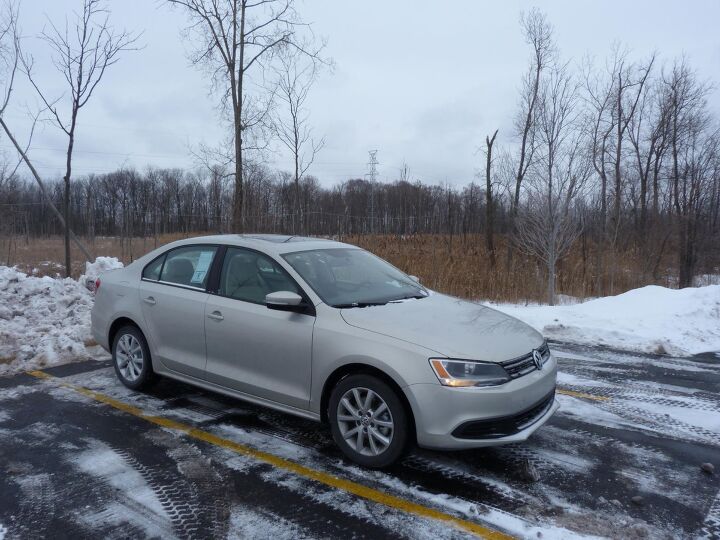
























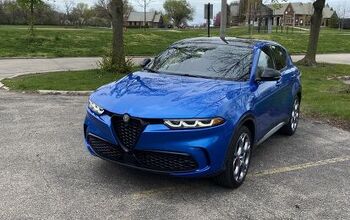

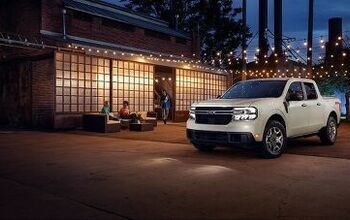
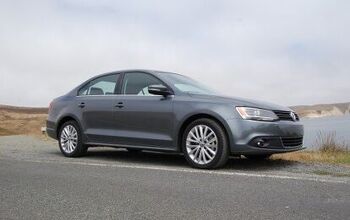

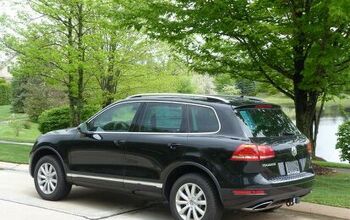
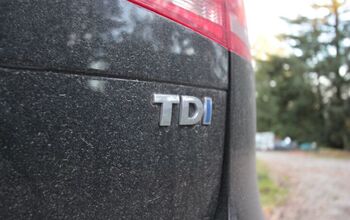
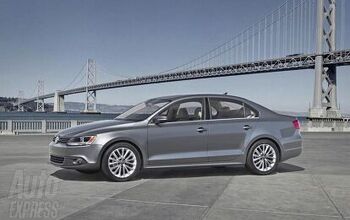








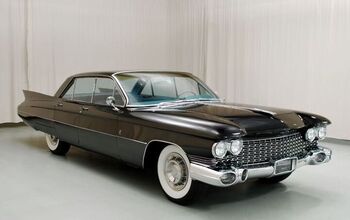
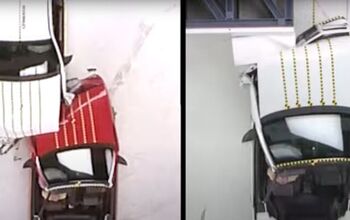
Comments
Join the conversation
Having just got back from a trip to Germany and Northern Italy I have a solid respect for VW. We rode in my buddies 5speed 115 hp 1990 VW Golf up and down the alps (His car was basic in all regards but solid). I can say that the new Jetta SE and S that i tested are more Euro style the any car i seen in the USA so far. We expect high end here but its not that way in Europe. When i say Euro I mean its Simple yet Effective in all regards. Im in the market for a 2011 new car and have tested the Cruz Lt and Ltz(To expensive with anything nice in it/Crappy engine for weight of car. Euro styling and build feel though), Chrysler 200(Base car felt cheap and no power), Fiat 500 (not sure what to think of this car yet), And last today i will test the car i want the least, The Hyndai Elantra(my roomie swears by this car. But i can see that the one thats local is more then the Jetta and what i can see its not as good a car as all the hype seems to say. I think across the board VW built a solid EURO inspired car that works for VW in Europe and i think will work for them here. I will say the 4 pot doesnt work for the cars weight and the fuel use should be better. But in truth the whole 40MPG is BS it all in how you drive and your location. Thats my 2 cents lol
Once you own a German rear wheel drive for example BMW you can get inside any other car don't matter how new it can be if it's a front wheel drive it makes you feel some type of way,you Are going to feel powerless. That's why I love BMW's they are for sure the ultimate driving machine.